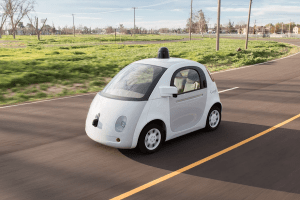 There has been a lot of news about self-driving cars this week. U.S. Transportation Secretary Foxx announced support for speeding up the process for new connected car technology, following the news that Google self-driving cars have been in 11 accidents during its testing phase, all caused by human error. Today, Google announced that this summer it will begin testing its own Google prototype vehicles on the roads of Mountain View, with safety drivers aboard.
There has been a lot of news about self-driving cars this week. U.S. Transportation Secretary Foxx announced support for speeding up the process for new connected car technology, following the news that Google self-driving cars have been in 11 accidents during its testing phase, all caused by human error. Today, Google announced that this summer it will begin testing its own Google prototype vehicles on the roads of Mountain View, with safety drivers aboard.
While Google continues to call them vehicles the media calls them cars. These vehicles can only go 25 mph and are classified as Low Speed Vehicles (LSV) and have minimal safety features and protection. They do not have air bags and can only drive in areas that have in-depth Google maps. The vehicles are electric and can go 80 miles on one charge. The 25 test vehicles will use the same software that the self-driving Lexus RX450h SUVs use on the streets.
“In the coming years, we’d like to run small pilot programs with our prototypes to learn what people would like to do with vehicles like this,” wrote Chris Urmson, Director of the Google Self-Driving Car Project.
Prior to the posting of the news, media were gathered at an event in Silicon Valley on Wednesday, where Urmson said that Google is building a website about its self-driving technology that will show details of any accidents in Google cars. People who encounter the Google SLSV (Self-driving Low Speed Vehicles) can leave comments about their experiences on the website.
The SLSV are produced in Detroit by Roush Industries and are outfitted with radar, lasers, cameras and a data connections to the cloud to share information.
Dimitri Dolgov reported that the software has improved. Th SLSVs low down when they detect that a car in the next lane is speeding up to cut in front of them. In one test, a Google car paused when a cyclist ran a red light. During the demonstration in Mountain an SLSV stopped for a row of folding chairs.
The only problem we see with these SLSV is that 25 mph is V-E-R-Y S-L-O-W for human drivers to drive behind. Try driving 25 mph on surface streets and see how quickly drivers will honk, yell and say nasty things to you, especially in Los Angeles, one of the rudest driving cities around.
Perhaps, the 11 accidents caused by humans with other Google self-driving cars were from the human drivers not knowing how the Google car would behave. Say, the Google car is stopping to figure out if something is a row of folding chairs for a parade or herd of cows, the human driver behind it may be in road-rage mode or could be looking a Google cards on his phone. BAM! There goes the Google car which appears to not have much of back bumper.
Urmson says on the video, “When we think about safety, when we think about giving people mobility, then when you start to think longer term about the impact on cities and the ability to reclaim space, reduce congestion and free up parking. This something where we can have a huge impact.”
Hopefully, when the SLSVs get rear-ended there will be only a little impact, Google has a patent for exploding inflatable marshmallow bumpers.
Daimler is currently testing a big rig self-driving truck. Delphi’s self-driving Audi SUV crossed the United States.